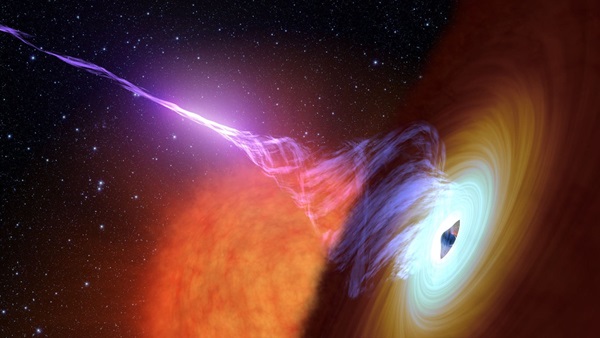How do black holes form? – Astronomy Magazine
This artist’s concept shows a black hole surrounded by a maelstrom of circling debris, as well as a powerful jet of hot plasma shooting into space.
NASA/JPL-Caltech
The most well-understood black holes are created when a massive star reaches the end of its life and implodes, collapsing in on itself.
A black hole takes up zero space, but does have mass — originally, most of the mass that used to be a star. And black holes get “bigger” (technically, more massive) as they consume matter near them. The bigger they are, the larger a zone of “no return” they have, where anything entering their territory is irrevocably lost to the black hole. This point of no return is called the event horizon.






